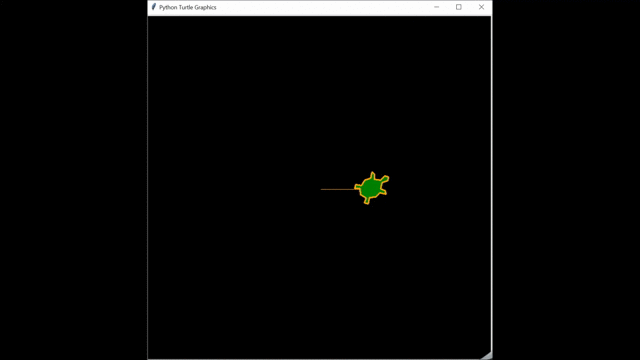In this programming exercise we were introduced to the Turtle module within python and learned to use functions to execute desired outcomes.
Laboratory Exercise:
Experiment with the Turtle Module
Source Code:
import turtle
from turtle import(clone)
turtle.bgcolor(“black”) #Set Screen Color
Marius=turtle.Turtle() #Set Turtle Name
turtle.showturtle() #Display Turtle
Marius.shape(“turtle”) #Set Turtle Shape
Marius.pencolor(“orange”)#Set Pen Color
Marius.fillcolor(“green”) #Set Turtle Color
Marius.shapesize(3,3,3)
Marius.pen(5) #Set Pen Length
Marius.forward(100) #Moves Turtle Right 100 Pixels
Marius.left(90) #Move Turtle Left 90 Degrees
#For Loop to Make a Square
for x in range (4):
Marius.forward(100)
Marius.left(90)
The following is a visual of the program’s output:
Programming Assignment:
Create the following turtle graphic
The following lab should be uploaded on your ePortfolio when is finished.
Using the turtle and random modules from Python, write a program (or script) to create an output screen as the one shown in the figure below.
To achieve this output you have to do the following:
- Change the color of the window to “red” using wn.bgcolor property of the screen variable you create.
- Your turtle variable has to have a pen color “white”, you have to use the .pencolor property of your turtle variable.
- You have to make your turtle to change its heading to the right with an random angle between 0 and 45 degrees.
- Move your turtle forward a random distance between 0 and 150 pixels.
- Then move the turtle backward the same distance than above
- Repeat the last three steps 100 times
Source Code:
import turtle
import random
turtle.bgcolor(“red”)
turtle.showturtle()
Galib=turtle.Turtle()
Galib.color(“white”)
Galib.shape(“turtle”)
Galib.pen(5)
for i in range (100):
Galib.right(random.randint(0,45))
dist_Move=random.randint(0,150)
Galib.forward(dist_Move)
Galib.backward(dist_Move)
The following is a visual of the program’s output:




